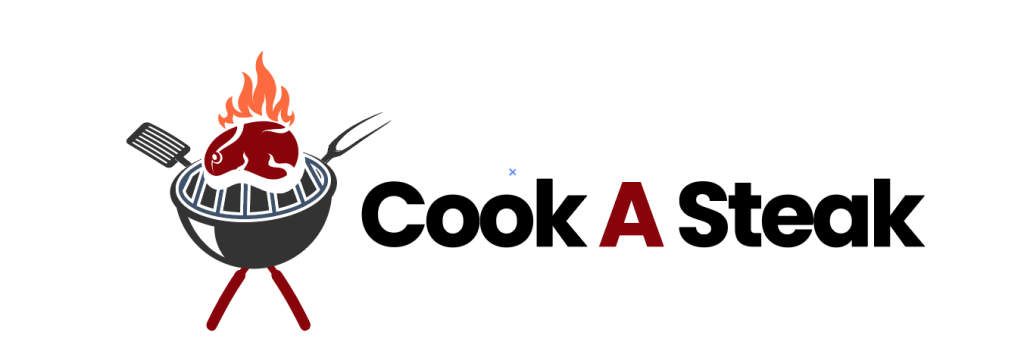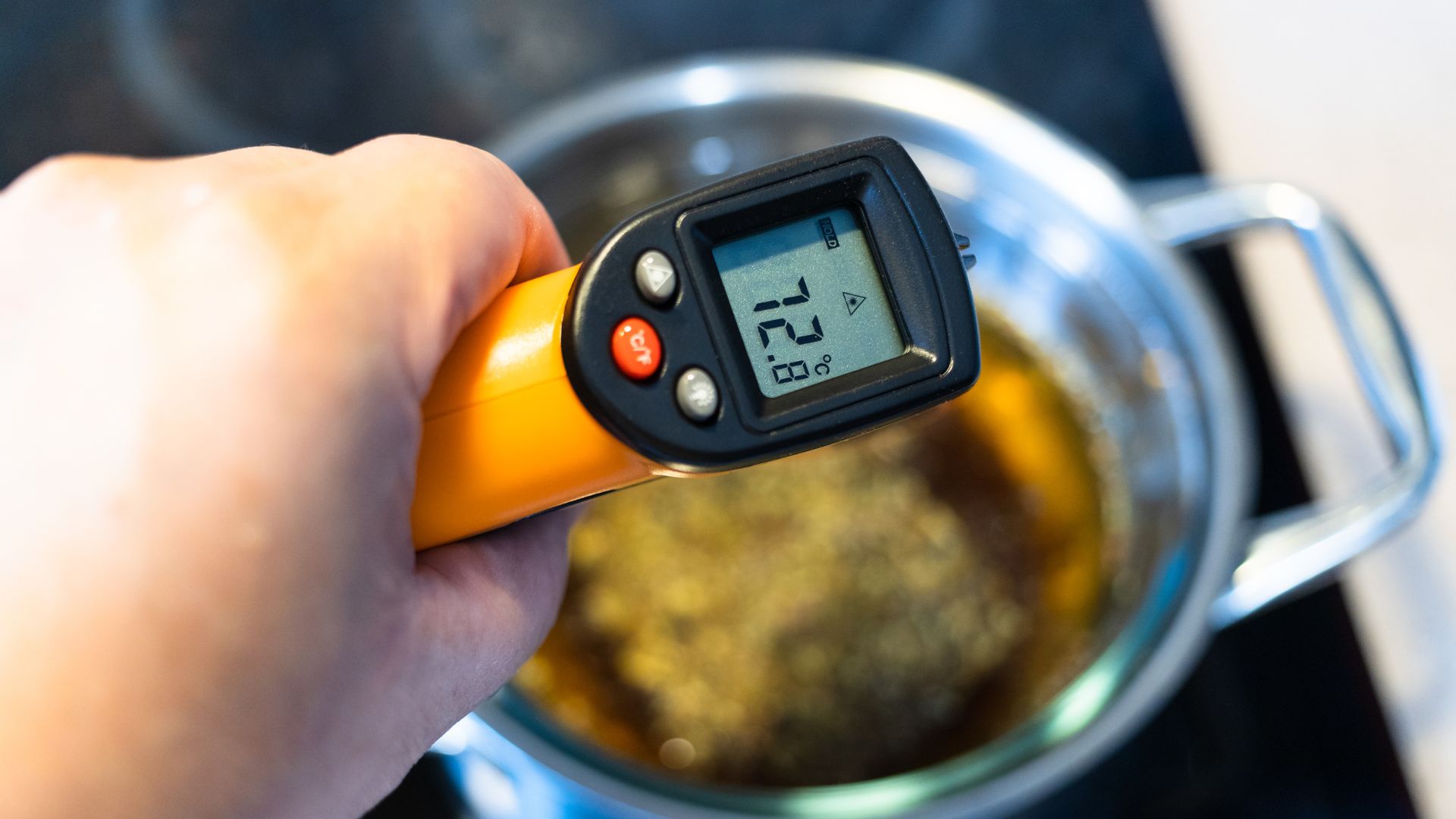Are you wondering how to use a laser food thermometer? Well, you are not alone.
As the owner of one of the most recognized steakhouses in the city and a well-known steak expert, I have devoted my entire life to honing the technique of preparing the ideal steak. Throughout the years, I have experimented with a wide variety of techniques, flavors, and cooking ways. However, the laser food thermometer has proven to be an important tool in my pursuit of steak perfection.
In this extensive tutorial, I will offer my knowledge and thoughts on how to use this useful tool to obtain the correct doneness for your steaks. This will ensure that you have a dining experience that is consistently excellent and fulfilling each and every time.
So, what exactly is an infrared thermometer?
An infrared thermometer uses infrared technology, which is sometimes referred to as a laser food thermometer. It is a temperature-measuring device that does not require contact with the thing you are measuring to ascertain the surface temperature of the object.
In contrast to conventional thermometers, which require direct contact with the object, infrared thermometers can monitor temperature at a distance. Hence, this makes them a more practical and hygienic option for use in the food industry.
What Exactly Is the Function of an Infrared Thermometer?
An infrared thermometer is an indispensable instrument for determining whether or not your steak has cooked through when it comes to cooking steaks. Let’s find how to use a laser food thermometer!
It is possible to ensure that the steak cooks to the level of doneness that you prefer by correctly monitoring the internal temperature of the steak. This is true regardless of whether you prefer it to be rare, medium-rare, medium, or all the way done.
There are a wide variety of applications for infrared thermometers. This ranges from industrial settings to home maintenance, and the applications are not limited to the kitchen. As a result of their ability to monitor the temperature of a wide variety of surfaces, liquids, and even electronic components, they are a particularly adaptable and valuable instrument in a variety of different industries.
What is the operation of an infrared thermometer?
Infrared thermometers can determine the temperature of an object by determining the quantity of infrared energy that it emits. When an object has a temperature that is higher than absolute zero, it will produce some amount of infrared radiation. This radiation is not visible to the naked eye. However, it can be detected by sensors that are specifically designed for this purpose.
The sensor of the thermometer captures the infrared radiation. It, then converts it into a temperature value that is present on the screen of the device. This method is referred to as infrared thermometry, and it is based on the principles of blackbody radiation.
According to these principles, the amount of infrared energy that an item emits is exactly proportional to the temperature of the object.
Thermometers that use infrared technology can measure temperatures
Temperatures can range from -58 degrees Fahrenheit to 1022 degrees Fahrenheit (-50 degrees Celsius to 550 degrees Celsius) on the majority of infrared thermometers. Because they have such a wide range, they are useful for a variety of cooking applications. This includes determining the temperature of products that are present in the refrigerator as well as determining the temperature of a grill or oven.
In the context of cooking steaks, infrared thermometers are especially helpful for monitoring the internal temperature of the meat. This helps to ensure that the steak gets the required level of doneness without being overcooked or undercooked.
Techniques for Utilizing an Infrared Thermometer
The use of an infrared thermometer is an easy process. However, it is vital to follow the appropriate techniques to ensure that the temperature readings are precise and dependable. The following is a detailed instruction that will walk you through the process of using an infrared thermometer to cook steak:
Make certain that the thermometer is spotless: Ensure that the lens of the thermometer is clean and clear of any debris. This could potentially adversely affect the accuracy of the reading before using the thermometer.
Change the emissivity: It is possible to alter the emissivity setting of some infrared thermometers. In this way, it corresponds to the substance that you are measuring. However, the default setting, which is often somewhere around 0.95, should be sufficient for the majority of food items, including steaks.
Get the thermometer adjusted: Adjust the thermometer so that it is pointing at the surface of the steak. Aim for the thickest part of the steak. However, avoid the bones and the gristle when doing so, for the most accurate reading possible.
Be sure to keep the appropriate distance: There is a precise distance-to-spot ratio that is associated with each thermometer. This ratio dictates the distance that you should hold the device from the object that you are measuring. For the required distance, please refer to the instructions that came with your thermometer.
Make use of the reading: The laser pointer on the thermometer can be activated by pressing either the trigger or the button. Immediately after a few seconds, the temperature reading will be displayed on the screen.
Tips on How to Use a Laser Food Thermometer
- Avoid measuring near bones or gristle: These areas can conduct heat differently than the meat itself. This can potentially skew the temperature reading.
- Measure multiple spots: To get a more comprehensive understanding of the steak’s doneness, take temperature readings from various locations across the surface.
- Allow for carry-over cooking: Keep in mind that the steak’s temperature will continue to rise slightly after being removed from the heat source. This phenomenon is known as carry-over cooking.
Benefits of Infrared Thermometers
Infrared thermometers offer several advantages over traditional contact thermometers, making them an invaluable tool in the kitchen:
- Speed: Infrared thermometers provide instant temperature readings. This allows you to quickly check the doneness of your steaks! Hence, you don’t have to wait for a traditional thermometer to stabilize.
- Safety: By measuring temperature from a distance, infrared thermometers minimize the risk of cross-contamination and potential burns from touching hot surfaces.
- Versatility: Infrared thermometers can help measure the temperature of various items beyond just food. These include grill grates, oven walls, and even the surface of your refrigerator or freezer.
- Accuracy: When used correctly, infrared thermometers can provide highly accurate temperature readings. This helps in ensuring that your steaks cook to perfection every time.
Can You Use an Infrared Thermometer on Humans?
Although some infrared thermometers are specifically for human use, such as forehead thermometers, it is not advisable to use a food-grade infrared thermometer to measure human body temperature. These devices have specific calibrations for measuring the surface temperature of inanimate objects. Hence, they may not provide accurate readings when used on human skin.
If you need to measure a person’s body temperature, it’s best to use a dedicated medical thermometer designed for that purpose.
Conclusion
A laser food thermometer is an indispensable tool that can elevate your cooking game to new heights. By accurately monitoring the internal temperature of your steaks, you can ensure you have cooked them to your desired level of doneness. It depends on whether you prefer a rare, juicy center or a well-done, evenly-cooked piece of meat.
Remember, practice makes perfect, and don’t be afraid to experiment with different cooking methods, seasonings, and temperature ranges to find your ideal steak preparation. With the help of your trusty infrared thermometer and a passion for culinary excellence, you’ll be impressing your guests with restaurant-quality steaks in no time.
So, embrace the power of infrared technology, and embark on a journey of steak mastery that will tantalize your taste buds and leave your dining companions in awe of your culinary prowess.

